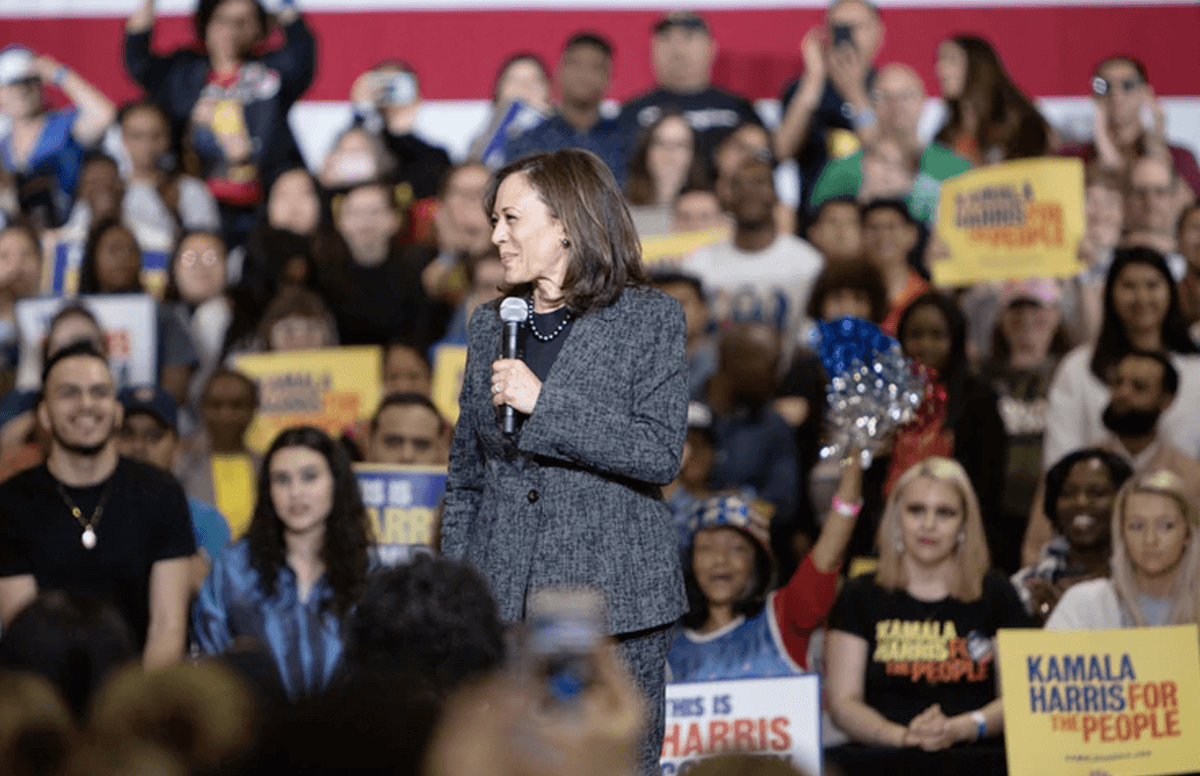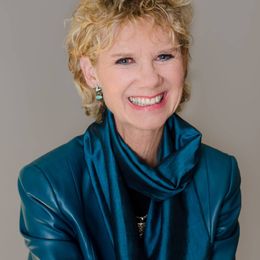2020 Election: The Kamala Harris Plan to Close the Gender Pay Gap
The first of Next Avenue's analyses of the candidates' policy ideas
Now that the 2020 presidential election campaign is in full swing, Next Avenue will be analyzing the candidates’ policy ideas of particular interest to Americans 50 and older. We’re starting with one from Democrat Kamala Harris, which aims to close the gender pay gap at employers; women earn roughly 80 cents for every dollar men do (the gap is even larger for black and Latina women).

Harris, a Senator from California, just announced her idea and calls it “The Most Aggressive Equal Pay Proposal in History.”
That may be true, but it’s worth noting that — and you probably haven’t heard this — the United States may actually be on the cusp of collecting data for pay equity analysis.
The Upcoming Gender Pay Requirement
An Obama rule will require employers of more than 100 workers to confidentially report to the Equal Employment Opportunity Commission (EEOC) by September 30 their information about what they pay their employees by sex, race, ethnicity, and job category, thanks to a recent ruling by U.S. District Judge Tanya Chutkan.
Sen. Kamala Harris calls her idea 'The Most Aggressive Equal Pay Proposal in History.'
Judge Chutkan ruled in favor of the National Women’s Law Center (NWLC), which filed a lawsuit against the Trump administration’s decision to block the rule from taking effect.
What the Kamala Harris Proposal Would Do
Harris’ proposal would go much further. She’d compel all companies with 100 or more employees to prove they pay men and women the same for doing work of the same value or get fined 1% of their profits for every 1% wage gap.
Harris would also require corporations to report the share of women in leadership positions, block employers from asking job applicants about their prior salary history, and bar firms from using forced arbitration to handle pay discrimination claims.
Harris’ proposal echoes initiatives underway in Iceland and France, where financial penalties are imposed on firms with gender gaps. Great Britain has its own gender pay gap rule: There, employers with more than 250 employees must publish their gender pay gap (a quarter of them have a gap of more than 20% in favor of men and the overall gap is 9.6%, according to The Guardian).
Would Harris’ plan work? Could it work?
Views From 2 Gender Pay Gap Experts
Before I offer answers to those questions from two experts, let me note that for the Harris gender pay gap plan to take effect, not only would she need to win the presidency, she’d need Congressional backing.
And with the current Congress (subject to change after the 2020 election), it would face almost certain opposition from Republicans. As Fortune reported, a Republican National Committee spokeswoman said: “We don’t need to strap new regulations, burdens or fines on businesses to create opportunities for women, and President Trump’s economic record is a testament to that.”
That said, here’s what Siri Chilazi, a research fellow at the women and public policy program at the Harvard John F. Kennedy School of Government, and Andrea Johnson, senior counsel for state policy at the National Women’s Law Center, told me when I asked them about the Harris gender pay gap proposal:
Kerry Hannon: What do you think of Senator Harris’ proposal and what would be obstacles to it happening?
Siri Chilazi: I think Kamala Harris' proposal is very encouraging for two reasons.
One, it brings more national attention to the equal pay issue and forces other candidates in the 2020 presidential race to consider putting it on their agenda as well.
Secondly, on a policy level, I think her proposal is absolutely a step in the right direction. Given that our national gender pay gap remains at approximately 20%, despite having had equal pay laws on the books for over half a century, it is clear that we need better, new, and different public policy to close the gap for good.
Research strongly suggests that organizational and systemic inequalities, rather than individual choices, are the main driver of the gender pay gap. Therefore, the solutions should also target organizations, rather than individuals, and this is exactly what Harris' proposal does. It incorporates many evidence-based strategies — data collection and reporting, transparency and disclosure, deadlines and financial incentives — that have been shown to work in changing behaviors and practices.
Regarding obstacles, I think political will is a major one. Also, some companies and umbrella organizations, like the U.S. Chamber of Commerce, will likely grumble.
On that note, one feature of the plan that I think is particularly promising is the proposed $10 million innovation fund — “challenge grants” — to encourage the development of new equal pay compliance tools. In order for this type of proposal to be truly successful, we need to make it as easy and attractive as possible for companies to comply. Clear guidelines, streamlined reporting procedures and tools that facilitate data collection will be very important.
Andrea Johnson: We want all candidates to be focused on equal pay and pay transparency. It is so crucial to closing the wage gap.
We hope to see the United States working to do what some of the other countries are doing on transparency and getting employers to regularly look at their books and see disparities. It would shift the focus to the front and work proactively to close the gap.
Salary history is another tool, and preventing employers from asking about it is another piece of her proposal. We know how unfair it is and that’s why 10 states have now passed laws in the last few years to stop the practice.
Are we at a point where companies world actually agree to do this?
Chilazi: My sense is that if companies truly embraced equal pay, we would have seen much more voluntary movement in this area already.
Given that companies by and large are not chomping at the bit to tackle the gender pay gap voluntarily, I think the government — through public policy like Harris' proposal — has an important role to play to get us moving in the right direction.
A great example of this is the UK, where the government's requirement for companies to analyze and report on their pay gaps not only raised the profile of the issue in the public discourse, but also nudged companies to take more action around equal pay.
In reporting their data last year for the first time, many companies chose to go above and beyond the minimum requirements and disclose additional data that provided insight and analysis into the drivers and causes of their gaps.
Johnson: We are at a crossroads. We live in a country that has a strong culture of pay secrecy. That is providing an impediment to transparency initiatives.
Pay secrecy is about power. When companies have more information about pay, they hold more power in pay negotiations. And there is a reluctance from some businesses to relinquish this power.
How much might the gender pay gap close, and how soon, if this happened?
Chilazi: We really have no way of knowing at this stage. The other important thing to keep in mind is that two of the major drivers of the gender pay gap in the United States are “across-occupation” segregation — women being disproportionately clustered in low-paying occupations and men in systematically higher-paying occupations — and “within-occupation” segregation — women being disproportionately found in lower-level, lower-paying jobs within an organization or industry while men disproportionately occupy the highest-paying roles.
Harris' proposal doesn't directly address either of these issues. So while the proposal is absolutely a step in the right direction, and hopefully would close some of the gender pay gap, it probably won't be a panacea.
Johnson: It’s hard to put concrete numbers or projections on the proposal, but I will say we are increasingly recognizing that pay transparency and doing these equal pay analyses are incredibly crucial to closing the wage gap.
There are a lot of tools we need to be using to close the wage gap, but transparency is a major tool that will make a big difference. It is a strong accountability mechanism.
Maybe the other countries’ experiences trying to close the gender pay gap will give a clue?
Chilazi: The closest existing parallels to Harris' proposal are the laws recently passed in Iceland and France. Given that these laws are not in full effect yet, we can't say anything about their impacts on the gender pay gap.
Johnson: The efforts in the UK are interesting because a lot of those employers are also in the U.S.
When you are more transparent about your pay gap, you come up with numbers that are pretty shocking, and we need to be shocked. For way too long people have been ok with that and it is completely unacceptable.
In the UK, occupational segregation shows fewer women going into these jobs; calling attention to that is important. Everything is interrelated.
It is important to look at all these practices and structures that have been in place for so long. They are perpetuating wage gaps. There is no excuse.


